VEHICLE LEANS TO ONE SIDE REPAIR PROCEDURE OUTLINED

VEHICLES AFFECTED: 1973-86 C/K Trucks
A condition may exist on certain C/K trucks where the vehicle appears to lean, usually to the driver's side. The following procedure can be used to repair this condition.
Service Procedure
1. Check for proper tire size, and inflation and correct if necessary.
2. The vehicle must be empty, placed on a level shop floor and jounced to release any residual frictional loading in the suspension.
3. Measure from ground to sheet metal at the top centre of the front wheel opening on each side of the vehicle (see Figure 1.) Repeat on the rear wheel openings.
4. If little difference is found (3/4 inch or less side to side), check the bumper and exterior trim alignment. Misaligned bumpers and trim could cause the vehicle to appear to lean even if it does not. Note that a full fuel tank can cause 1/2 inch difference side to side at the front wheel opening compared to when the fuel tank is empty.
If more than 3/4 inch difference is found, suspension measurements should be made as described below while the vehicle is sitting on the level floor (not on a lift).
5. In the front, take measurements on each side from the top of the lower control arm bracket to the front suspension crossmember flange (see Figure 2-a) on 'C' models, or from the top of spring anchor plate to bottom of frame (see Figure 2-b) on 'K' models.
6. In the rear, measure from the top of the rear axle tube to the bottom of frame (see Figure 3), on each side.
7. Compare side to side measurements. The difference between each side should not exceed 3/8 inch at either the front or rear.
Note that a full fuel tank can cause 1/4 inch difference in the rear suspension height as compared to an empty fuel tank.
If the difference is greater than 3/8 inch, check the springs for correct part and proper installation. Replace incorrect springs. Also, on leaf springs, visually compare spring camber (arch) on low side with the spring on the high side. The camber (arch) should be similar. Switch leaf springs from one side to the other and determine if this corrects the lean problem. If one spring is noticeably flatter than the other, replace the flatter spring or have the higher spring recambered to match the lower springs at a qualified spring rebuilder. The flatter spring cannot be recambered higher unless it is disassembled and each leaf is reformed and properly heated and quenched. This capability is not generally available apart from spring manufacturers. If a flat spring is cambered higher without heat treating, it will eventually flatten to its original state.
8. If springs have correct part numbers, the suspension can be leveled using standard spring shims available at spring shops. Shims are not to exceed a total of 1/2 inch.
9. If the suspension is level and lean persists, check the body mounts. Inspect body mount cushions. Check that they are not crushed or split, and replace as necessary.
10. If the condition has not been corrected by utilizing the above procedures, the body can be shimmed to level the trim height.
11. The body can be most easily shimmed by loosening all the body mounts and radiator support mounts, and shimming the rear body mount on the low side until the back is level. Body mount locations shown from the side of the vehicle and an example mount are shown in Figures 4-a through 4-d. Shim the middle body mounts on the low side only if necessary due to the space created by the rear shim. Tighten the body mounts using the following specifications:
Location Torque
C/K Pickup cab mounts 60-90 N.m (44-66 ft. lbs.) 6 forward mounts on Suburban 4 forward mounts on K Blazer/Jimmy 2 radiator supports 40-54 N.m (30-40 ft. lbs.) C/K Pickup bed mounts 40-54 N.m (30-40 ft. lbs.) 6 rear mounts on Suburban 4 rear mounts on K Blazer/Jimmy
12. Step 11 can be repeated starting with the front low side mount and radiator support mount if necessary.
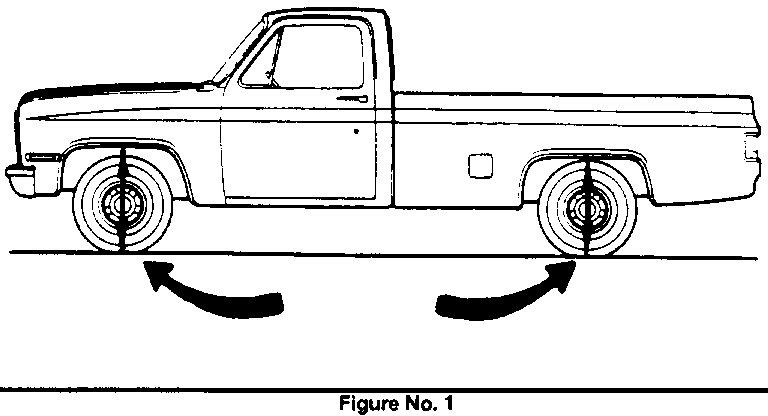

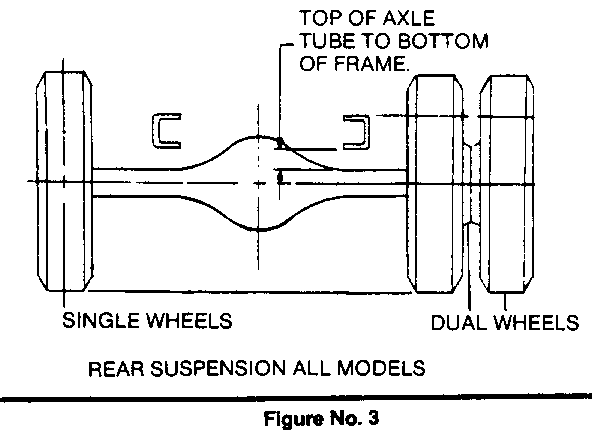

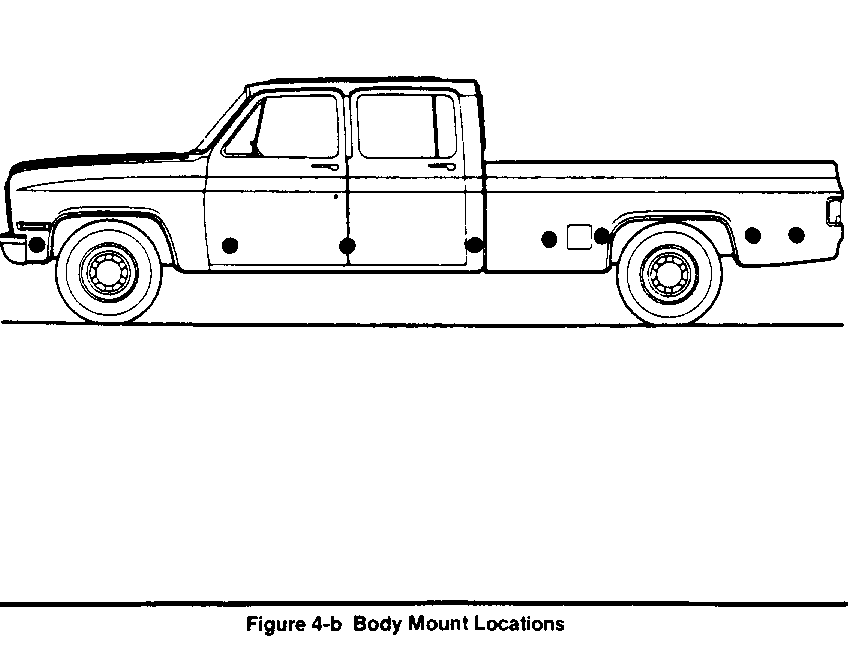


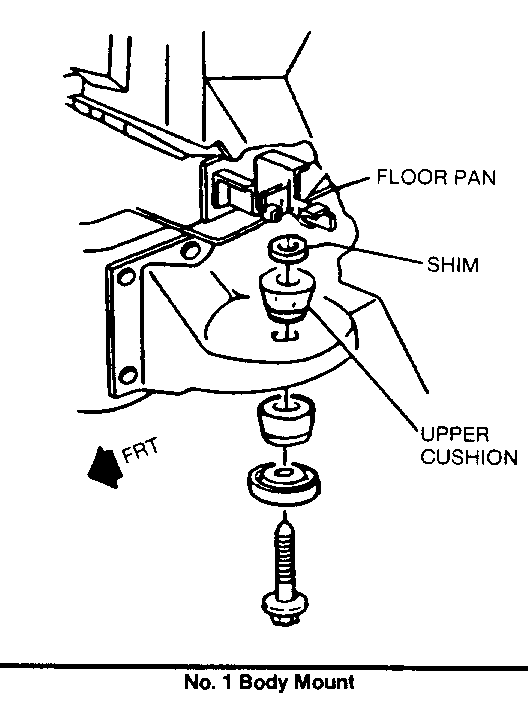
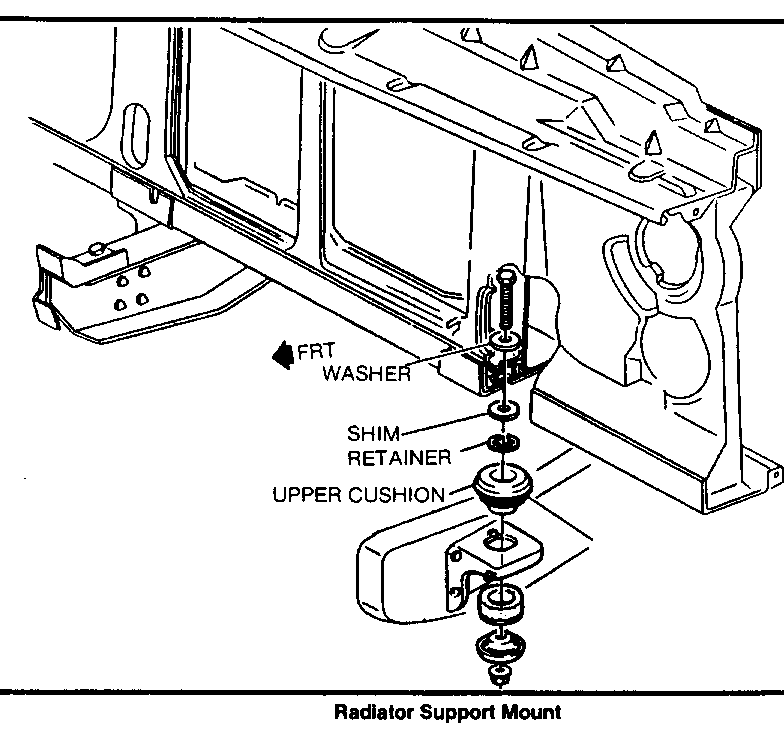
General Motors bulletins are intended for use by professional technicians, not a "do-it-yourselfer". They are written to inform those technicians of conditions that may occur on some vehicles, or to provide information that could assist in the proper service of a vehicle. Properly trained technicians have the equipment, tools, safety instructions and know-how to do a job properly and safely. If a condition is described, do not assume that the bulletin applies to your vehicle, or that your vehicle will have that condition. See a General Motors dealer servicing your brand of General Motors vehicle for information on whether your vehicle may benefit from the information.
